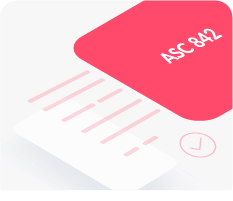Most organizations that take real estate spaces or equipment assets like IT, fleet, or medical devices on lease, keep and use those leased assets within their organization for internal use. They are the lessees, and the lease financing company (who could be the property owner, or a third-party funder) is the lessor. However, there are times when it makes sense to sublease unutilized or underutilized spaces to another organization or lease products directly to customers (as opposed to outright sale), turning the organization into a lessor. This requires different accounting, specifically lessor accounting.
In a lease agreement, the lessor is responsible for providing an asset, be it real estate or equipment, on lease to a lessee while retaining legal ownership. Although the lessor remains the legal owner of the asset, control is temporarily handed over to the lessee based on the lease terms.
In layman’s terms, whether in a real estate or equipment lease, the lessee is the party receiving the asset for use over a defined term and is responsible for making rental payments. Conversely, the lessor is the person or entity that provides the asset on lease, allowing the lessee to use the property or equipment for a specified duration and under certain conditions.
Types of lease agreements from a lessor’s perspective
From the standpoint of a lessor in accounting and finance, there are three primary types of lease agreements based on their financial statement treatment: operating, sales-type, and direct financing leases.
Operating leases
These are leases for which the lessor collects rental for use of the asset by the lessee for a part of its economic life, without transferring a substantial portion of the risks and rewards of ownership and without transferring the ownership of the asset to the lessee at the end of the lease. In this type of lease, the lessor usually bears the brunt of ownership responsibilities, such as maintenance, insurance, and other related costs. In terms of accounting, the lessor will depreciate the asset while recording lease payments as revenue throughout the lease duration.
Sales-type and direct financing leases
Sales-type and direct financing leases resemble financed purchases; the lease term spans most of the asset’s useful life and the lessor typically transfers the risk and rewards associated with ownership of the leased asset to the lessee.
From the lessor’s viewpoint, the asset is derecognized from the balance sheet. The net investment in the lease, calculated as the present value of future lease payments, is logged as a receivable. The difference between the leased asset’s carrying value and the net investment in the lease (lease receivable plus unguaranteed residual asset) is recognized as gain or loss immediately in the case of sales-type leases while selling profit is deferred in the case of direct financing leases (though a loss is recognized immediately).
Key accounting standards
Lease accounting is integral to the transparency and accuracy of financial reporting in the global business environment. Various governing bodies have set standards that apply to lessors as well as lessees, making it essential for lessors to be well-informed for both compliance and strategic reasons.
The Financial Accounting Standards Board (FASB) introduced ASC 842 establishing key rules around accounting for leases. It is important for lessors to understand ASC 842’s intricacies, as it affects their revenue recognition and financial statement presentation. Non-compliance can lead to material misstatements in the financial statements, potentially misleading investors.
The International Accounting Standards Board (IASB) introduced International Financial Reporting Standard (IFRS) 16 and has standardized lease transactions for many countries, bringing most leases on to the balance sheet. Lessors operating globally must familiarize themselves with this standard to ensure alignment with various jurisdictions’ requirements.
For US government and not-for-profit entities, GASB’s Statement No. 87 enhances lease reporting tailored for the public sector and not-for-profit organizations, though its core principles mirror ASC 842. Lessors belonging to these types of entities must adhere to GASB 87 to maintain trust in the organization’s financial reporting.
Failing to comply with these standards can have significant consequences for lessors, from legal repercussions to damaged credibility and potential financial setbacks. In sum, staying updated with lease accounting standards is crucial for lessors’ financial and reputational well-being.
Practical steps for lessor accounting
Lessor accounting refers to the process of recording financial transactions related to leased assets from the perspective of the entity that owns the asset and is leasing it out (the lessor). The accounting methods and treatment can vary depending on the nature of the lease, whether it is classified as a sales-type lease, direct financing lease, or an operating lease.
Here are the practical steps for lessor accounting:
1. Classify the lease:
- Determine if it’s a sales-type lease, direct financing lease, or an operating lease based on risk and reward criteria.
2. Sales-type leases:
- Initial recognition: Record net investment in the lease which is made up of present value of the lease payments, residual value guarantee, and any unguaranteed residual value using the rate implicit in the lease to discount the future cash flows. Derecognize the owned asset at carrying amounts. Book a loss or gain immediately for any difference between the aggregate present calculated in the above step and the carrying amount. Any initial direct costs would be expensed as incurred unless fair value of the underlying asset is equal to the carrying value, in which case it would be deferred.
- Subsequent measurement: Recognize interest income monthly using the implicit rate. Record a reduction in receivable for the difference between the monthly payment and the interest. Reclass receivables so that the receivable due within the next 12 months is presented as current receivables.
3. Direct financing leases:
- Initial recognition: Record net investment in the lease which is made up of present value of the lease payments, residual value guarantee and any unguaranteed residual value using the rate implicit in the lease to discount the future cash flows, less any selling profit and Initial direct cost which is deferred and amortized over the lease term. Derecognize the owned asset at carrying amount. Book any selling loss immediately for any difference between the leased asset’s fair value and carrying amount.
- Subsequent measurement: Recognize interest income monthly using the implicit rate. Record a reduction in receivable for the difference between the monthly payment and the interest. Reclass receivables so that the receivable due within the next 12 months is presented as current receivables.
4. Operating leases:
- Lease income: Recognize it evenly over the lease term.
- Leased assets: Retain on the balance sheet and depreciate like any other fixed asset.
5. Disclosure:
- Disclose required lease details in financial statements as per regulations.
6. Stay updated:
- Keep abreast of changes in accounting standards for leases.
7. Documentation:
- Maintain records of lease agreements and related calculations.
8. If lease terms change:
- Reassess and adjust classification and accounting. Such accounting changes are also governed by complex rules.
9. Implement controls:
- Ensure accurate calculations and compliance through internal checks.
10. Consider software:
- Use software for ease in managing and accounting for multiple leases.
Implementing lease accounting software
If you are a lessor that is looking to optimize your operations, improve accuracy and stay compliant with the current standards, it’s time to put our solution to the test. Don’t be left behind in this changing leasing industry; schedule a demo with EZLease today to learn how we can improve your accounting experience as a lessor.




